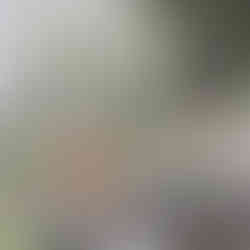Buddha On A Forklift
- Deborah Llewellyn
- Jul 1, 2021
- 9 min read

The most beautiful gardens in the world are found in Bali. From my first visits, I longed to bring back a little Bali to our Beaufort, NC, back yard. I dreamed about lush, tropical plants, birds splashing in pools of cascading water, open porches with swinging beds, garden niches for quiet repose, and stone relics.

Eating slices of ripe mango, papaya, and pineapple dipped in dollops of yogurt that is traditionally fermented in clay bowls. The fresh ground aroma of locally grown coffee perched on my balcony railing. Looking up to the sun rising over the volcano and below to the stone carved temple grounds. A hand-made rice paper journal beckons me to write or sit still with my creative and holy muse.

Slowly I make my way down the moss covered steps to a cold splash pool perched on the side of a ravine that is lined in a tangle of tropical greens. A parrot cocks its head and greets me as I sink into the pool. The stone goddess pours water over my head as I swim to the surface. From the newly planted, terraced rice field on the other side of the ravine, I hear children's laughter. I sip fresh ginger soda through a lemongrass straw, shaded by birds of paradise, and inhale this beauty, longing to stay or take it home.

Bali's beauty comes from its lush, tropical landscape, with views of mountains and sea, and moreover, from its charming people who smile with their face and heart. For the Balinese, nature and spirituality are integrated into everyday life. The colors of emerald green found in a terraced rice field are not easily forgotten. Nor is the sight of a farmer with hoisted flag above his head, leading a line of ducks from the rice field at dusk. Many farmers, many armies of ducks, each imprinted to recognize its specific flag.

Balinese architecture has a peaceful presence, blending in with nature. Interior rooms open to covered porches and courtyards filled with ancestor shrines and clay pots dripping with raindrops and orchids. Earth tones dominate in Bali's simple and elegant structures and lifestyle. The soothing sounds of water and bamboo chimes are ever-present. Daily life is dedicated to the finest craftsmanship and art, to their families, their ancestors and to the island visitors.

The Balinese spiritual life is blended from a lively mix of Hinduism, Buddhism and Animism, that together form a colorful cast of characters and stories to tell their children or shape into functional art. The Balinese believe that everyday household objects should be things of beauty. This is present in carved doors and windows, mirrors, structural beams of houses and teak and bamboo furniture; in clay pots and effigies; in rice paper kites; and woven hats, bags and parasols. Hand dyed and woven cloth in rich burgundies, blues and browns, is stretched above the beds, on the beds, and made into veranda pillows.

Ubud, the cultural and artistic heart of Bali is in a central mountainous area of the island. One can choose from an abundance of charming and inexpensive hotels with private porches and gardens off each room, such as Narasoma, the hotel I frequent. The streets are lined with al fresco cafes offering simple enchantment or perhaps you will find Chris Salans, a five-star chef from California's French Laundry with his Balinese wife, cooking under the stars at Mosaic Restaurant. I can still taste their Victoria Duck with Apicius spices, crispy seared prawns in a black truffle herb infusion, and fresh fruit sorbet.
There are unimaginable opportunities to buy hand-made designer clothing, and exquisite art and crafts to tuck into your luggage. Bali also makes shopping easy for architects and designers who wish to purchase elaborately carved doors and mirrors, massive stone sculptures, Balinese-style furniture, or even a traditional garden pavilion with floating beds or carved benches for their clients back home. A lovely aspect of buying Balinese is that the purchases support a multi-generational tradition of fine art and crafts.

On a mission to build a Balinese garden in Beaufort, Charles and I visited a recommended shipping office. The shipping officer said this: "Just go and shop for anything you want. Bring us the receipts and we will go, pick up, and pack your purchases. Before you leave, we will take you to our warehouse to inspect your shipment."

When the shipper told us that weight didn't matter, we went shopping for large stone Buddha's, and other stone objects that we could imagine in our garden. We found a stone frieze to mount on the wall of our carriage house, a life-size goddess pouring water into the pool we would need to construct, and some small statues for our woodland beds. But we could not find a Buddha we loved.

We visited a teak furniture company to look at garden furniture, but it was the Buddha guarding the door that caught Charles's eye. The serene Buddha was sitting atop an elaborately carved turtle with an opening for a water spout in the turtle's mouth. We knew there was an ancient story about Buddha riding a turtle across the sea, but we had never seen such a statue. Covered in mosses, tiny ferns and yellow flowers, it had obviously been there as long as the shop.
We wandered through the shop and chatted with the owner. Charles casually asked the owner if the Buddha was for sale. The owner cocked his head and thought about it, a pregnant pause, while we held our breath. "Why not?" he replied.
We asked the price and after another long pause he decided it was worth $150. We thought it was worth the moon but we gladly paid his asking price. We envisioned our Buddha on a Turtle with water gushing from the turtle's mouth, as the centerpiece of our garden.
We were working in Bangladesh at that time and arranged the shipment from Bali to arrive in Beaufort, North Carolina, during the two months-vacation we spent there each summer. Over the next six months, the size of the shipment grew smaller in Charles's mind and bigger in mine. Charles thought the three large pieces would fit in the back of my mom's van. When we drove up to the shipping platform at the port in Wilmington, we realized how big and heavy were our purchases. We scrambled all over town and finally located the last available U-Haul truck.
The shippers transferred the statues to the back of our rental truck and we headed home, knowing that our dear friends, David and Gloria, would be arriving for the weekend about the time of our return. We were scheduled to attend an event at 7pm. The U-Haul truck had to be unloaded and returned early the next morning, pre-rented to someone else. The two hours between arrival and event would be hectic.

Indeed, our friends arrived shortly after we did. The four of us stood and stared at the objects in the van. The guys even climbed inside and tried to move one. Not possible.
The clock was ticking. However, Charles seemed less worried about the statue problem than finding something enjoyable for David and Gloria to do while we were at the event. Charles tends not to stress about big problems, because in his experience, coupled with a heavy dose of magical thinking, problems work themselves out.
So in spite of me pointing at my watch and reminding him that we needed to shower and change clothes, he suggested that our friends take an early evening kayak ride and then enjoy some oyster burgers, David's favorite local food, while we were away. Charles offered to help them set up and launch the kayaks.

While I did not think that Charles had time to do this, I was offered the opportunity, once again, to see that Charles's supreme kindness toward others is rewarded back to him ten-fold. This sweet moment with David was prescient, as David tragically died shortly after this visit.
Across the street from the kayak launching point, Charles noticed a landscape crew installing a palm tree with a fork lift. After David and Gloria paddled away, he sauntered up to chat with the gardeners who fortuitously happened to work for the company that also cut our grass during the months we were working overseas. Charles asked them whether they might take a few minutes with their forklift to help him unload a couple of things from a truck and place them in our back garden. Just a half block up the street, not far, just three items.
They scratched their heads a bit and then called headquarters. The owner agreed with our request since we were one of their clients. Ready for action, Charles ran back up our street, followed by the forklift. I was astonished at this turn of events. The forklift driver effortlessly placed the three stone sculptures in the general locations where they would go.

A few days later, our son, Chas, arrived for a visit and the father-son duo put their heads together to solve the second problem, mounting the frieze that they could not lift, onto the side of the barn. They decided to think like the Egyptian pyramid builders and build a ramp. Several hours later, dripping from sweat, mission accomplished.
The next summer Charles installed a pool and pump for the Buddha. We decided to surround the pool with rocks and semi-precious gem stones that we had collected from the places we have lived and visited. Delighted birds perched on the Buddha's head and sipped water from the spout. We created a dense garden of leopard plants, hydrangeas, hostas and lilies around the Buddha.

Our friend, Catherine, gave us creeping fig from her house in Charleston to plant on the barn wall. Soon we would have a green back-drop for the frieze. We planted holly ferns along the base and added a stone bench from Peru for enjoying this lovely garden niche.
I mention the bench to note that this was not our first attempt at using carved stone features to enhance our garden. When we lived in Peru, Charles got the idea that we could use stonework from Peru to build a fountain on our patio back home in Durham. He designed and paid for the stone work but the artists never delivered. In fact, they seemed to run from us, when we came to check on progress.

On our final packing out day from Lima, Charles went back to the stone-yard, but the order we paid for was still not there. Furious, he picked up a stone fountain-head shaped like a lion's face, as well as the aforementioned bench, and put them in the back of our Volvo station-wagon.
The workers jumped up and down and yelled at him, fearful of what their boss would say. Charles told them to relay to the boss that he simply took what he thought was an equivalent amount of goods for what we had already paid.

In Bolivia, our next post, Charles discovered a stone carver who worked with a beautiful rose colored stone. Charles drew a sketch of a half-moon fountain to fit against the wall of our Durham house, using the lion head as the spout. Together they determined how many stones of assorted sizes would be required for the three feet deep fountain.
I won't go into the long story about our shipping obstacle, which Charles overcame by mailing one stone each week from LaPaz to his brother's house in Durham, in preparation for summer construction. Charles's brother, Richard, quickly fell from his mailman's favor, but remained high in ours.

When we lived in Nepal, we purchased bronze water spouts for a fountain off our side porch and herb garden. These were a replica of the stone spouts found in traditional community drinking and bathing pools throughout Kathmandu.


Back to the Beaufort house and Balinese statues. Behind our main backyard, we have a second garden, and I knew it needed a focal point. I envisioned a Balinese spa with water lilies and mossy pots of plants built around the stone goddess.

Charles translated my elaborate vision into a manageable structure. The following summer Charles went to work to build a pergola over the goddess and install a pump with water flowing into a pool of oyster shells.

The pergola was too tall. We lived with it long enough for Charles to forget the sweat equity and agree to lower the pergola by digging each hole for the support posts a foot deeper. I was pleased with his effort and he smiled, not telling me that at the fourth corner of the pergola, he ran into a wooden object underground, fortunately at the level he wanted to lower the structure. His curiosity was less than his desire to finish the job.
He was reluctant to tell me and when he did, he received exactly the barrage he expected: "You have to be kidding me. How many stories have we read about buried pirate treasure in Beaufort?"
"Perhaps it might have been a wooden coffin," he replied. "Best to leave things like that alone. Anyway if I took it out I would have a big hole and have to start the whole process over again."
Bit by bit the garden began to take shape. In 2011 we went back to Bali to relax and buy more statues. We bought a stone lotus bowl for a birdbath at our side entrance. The robins love it in winter.

We also shipped a Hindu Ganesh statue, and a set of five stone pots with spouts that were calibrated to form a waterfall at the feet of the Ganesh. This would enable us to enjoy the sound of flowing water while sitting on the front porch swing. This time we rented a fork-lift in advance.
Now we have six water features here and there among twelve beds of tropical plants. It's not quite Bali but it's close to paradise. Getting there taught me a lesson.
There are times you have to do some heavy lifting for a little serenity.























Your gardens in Beaufort truly represent the love and spiritual connection to nature you and Charles share. The lengths in which you went and the time taken to acquire the exact pieces for your gardens are felt through the energy which exudes from every corner. It is my utmost delight and treat to have the fortunate ability to gaze upon your gardens from my yard. Your reflection above of Bali paints a picture in which one could loose herself. Thank you.